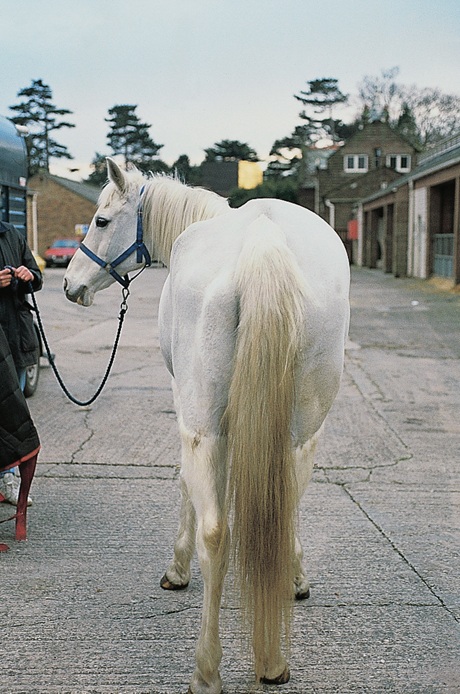Difference between revisions of "Equine Orthopaedics and Rheumatology Q&A 06"
Jump to navigation
Jump to search
Ggaitskell (talk | contribs) (Created page with "{{Template:Manson May}} centre|500px<br> <br /> '''A grey pony mare, born and bred in England, presented for a proble...") |
|||
| (5 intermediate revisions by 3 users not shown) | |||
| Line 12: | Line 12: | ||
|q1=What abnormality is present? | |q1=What abnormality is present? | ||
|a1= There is marked atrophy of the gluteal muscles on the left hindlimb. | |a1= There is marked atrophy of the gluteal muscles on the left hindlimb. | ||
| − | |l1= | + | |l1=Limb Muscles - Horse Anatomy |
|q2=What is the likely cause, and might it have been different if the animal had spent time in the USA. | |q2=What is the likely cause, and might it have been different if the animal had spent time in the USA. | ||
|a2= | |a2= | ||
| Line 20: | Line 20: | ||
*This is a slightly unusual case of polyneuritis equi (cauda equina neuritis). | *This is a slightly unusual case of polyneuritis equi (cauda equina neuritis). | ||
*In the USA, equine protozoal myeloencephalitis would have to be considered in such a case of focal neurogenic atrophy. | *In the USA, equine protozoal myeloencephalitis would have to be considered in such a case of focal neurogenic atrophy. | ||
| − | |l2= | + | |l2=Polyneuritis Equi |
|q3=What test is helpful in confirming this problem? | |q3=What test is helpful in confirming this problem? | ||
|a3=An ELISA has been developed to measure the increase in circulating antibodies to P2-myelin protein seen in cauda equina neuritis. | |a3=An ELISA has been developed to measure the increase in circulating antibodies to P2-myelin protein seen in cauda equina neuritis. | ||
| − | |l3= | + | |l3=Polyneuritis Equi#Diagnosis |
| − | |||
</FlashCard> | </FlashCard> | ||
Latest revision as of 13:09, 13 November 2012
| This question was provided by Manson Publishing as part of the OVAL Project. See more Equine Orthopaedic and Rheumatological questions |
A grey pony mare, born and bred in England, presented for a problem of the hindquarters. The pony was not particularly lame and had no history of lameness.
| Question | Answer | Article | |
| What abnormality is present? | There is marked atrophy of the gluteal muscles on the left hindlimb.
|
Link to Article | |
| What is the likely cause, and might it have been different if the animal had spent time in the USA. |
|
Link to Article | |
| What test is helpful in confirming this problem? | An ELISA has been developed to measure the increase in circulating antibodies to P2-myelin protein seen in cauda equina neuritis.
|
Link to Article | |
